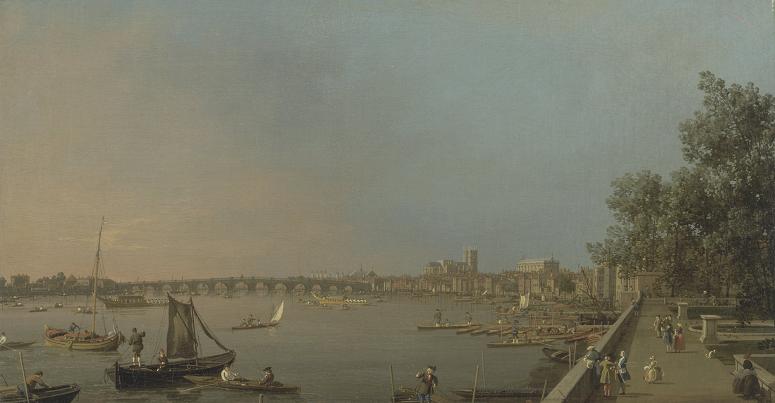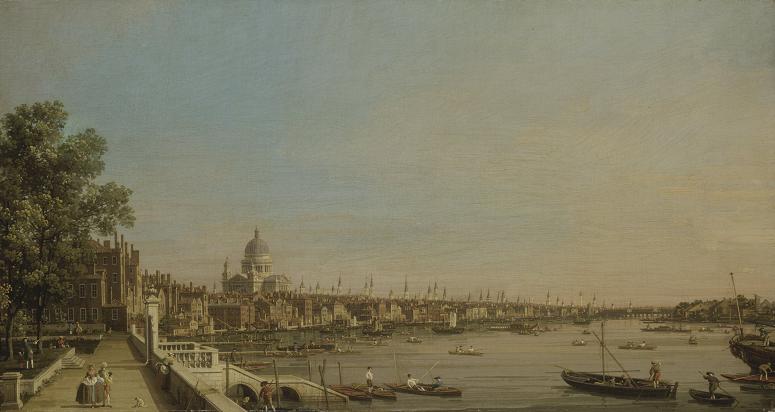River Thames. The River Thames, known alternatively in parts as the Isis, is a river that flows through southern England including London. At 215 miles, it is the longest river entirely in England and the second-longest in the United Kingdom, after the River Severn. It flows through Oxford, Reading, Henley-on-Thames and Windsor. The lower reaches of the river are called the Tideway, derived from its long tidal reach up to Teddington Lock. It rises at Thames Head in Gloucestershire, and flows into the North Sea via the Thames Estuary. The Thames drains the whole of Greater London. Its tidal section, reaching up to Teddington Lock, includes most of its London stretch and has a rise and fall of 23 feet. Running through some of the driest parts of mainland Britain and heavily abstracted for drinking water, the Thames' discharge is low considering its length and breadth: the Severn has a discharge almost twice as large on average despite having a smaller drainage basin. In Scotland, the Tay achieves more than double the Thames' average discharge from a drainage basin that is 60% smaller. Along its course are 45 navigation locks with accompanying weirs. Its catchment area covers a large part of south-eastern and a small part of western England; the river is fed by at least 50 named tributaries. The river contains over 80 islands. With its waters varying from freshwater to almost seawater, the Thames supports a variety of wildlife and has a number of adjoining Sites of Special Scientific Interest, with the largest being in the remaining parts of the North Kent Marshes and covering 5,449 hectares. The administrative powers of the Thames Conservancy have been taken on with modifications by the Environment Agency and, in respect of the Tideway part of the river, such powers are split between the agency and the Port of London Authority. The marks of human activity, in some cases dating back to Pre-Roman Britain, are visible at various points along the river. These include a variety of structures connected with use of the river, such as navigations, bridges and watermills, as well as prehistoric burial mounds. A major maritime route is formed for much of its length for shipping and supplies: through the Port of London for international trade, internally along its length and by its connection to the British canal system. The river's position has put it at the centre of many events in British history, leading to it being described by John Burns as liquid history. Two broad canals link the river to other river basins: the Kennet and Avon Canal and the Grand Union Canal. The Grand Union effectively bypassed the earlier, narrow and winding Oxford Canal which also remains open as a popular scenic recreational route. Three further cross-basin canals are disused but are in various stages of reconstruction: the Thames and Severn Canal, which operated until 1927, the Wey and Arun Canal to Littlehampton, which operated until 1871, and the Wilts and Berks Canal. Rowing and sailing clubs are common along the Thames, which is navigable to such vessels. Kayaking and canoeing also take place. Major annual events include the Henley Royal Regatta and the Boat Race, while the Thames has been used during two Summer Olympic Games: 1908 and 1948. Safe headwaters and reaches are a summer venue for organised swimming, which is prohibited on safety grounds in a stretch centred on Central London. The usually quoted source of the Thames is at Thames Head. This is about 3/4 mile north of Kemble parish church in southern Gloucestershire, near the town of Cirencester, in the Cotswolds. However, Seven Springs near Cheltenham, where the Churn rises, is also sometimes quoted as the Thames' source, as this location is furthest from the mouth, and adds some 14 miles to the river's length. At Seven Springs above the source is a stone with the Latin hexameter inscription Hic tuus o Tamesine pater septemgeminus fons, which means Here, O Father Thames, your sevenfold source. The springs at Seven Springs flow throughout the year, while those at Thames Head are only seasonal. The Thames is the longest river entirely in England. However, as the River Churn, sourced at Seven Springs, is 14 miles longer than the section of the Thames from its traditional source at Thames Head to the confluence, the overall length of the Thames measured from Seven Springs, at 229 miles, is greater than the Severn's length of 220 miles. Thus, the Churn/Thames river may be regarded as the longest natural river in the United Kingdom.
more...














